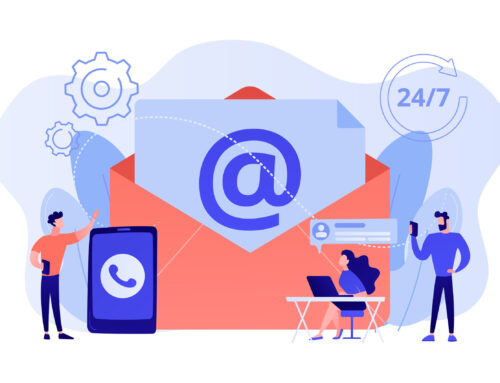When running projects with customers, we have observed many common mistakes. Below, you can read about the most common ones to avoid.
Lack of a Partnership Process
Companies do not have a partnership process, which leads to working in chaos, especially when dealing with multiple companies. It is crucial to design a process for acquiring partners. This process should include several steps in which potential partners are involved. For example:
- Identify qualified partners
- Initiate contact
- First meeting – introduction
- Second meeting – technical and business discussions
- Third meeting – negotiations
- Fourth meeting – jointly finding customers for POC
- Fifth meeting – signed partnership agreement
- Sixth meeting – onboarding
- Ghosting
- Postponing
- Declining
Each stage of the process should be clearly described and discussed with potential partners to explain how your company operates. As a B2B lead generation agency, we can assist you with the first three steps or provide active support throughout your entire partnership process until the deal is signed.
Lack of a CRM System
Another common mistake is the lack of a CRM system in your company. CRM stands for Customer Relationship Management. This system helps create, control, monitor, and navigate all communication with customers and partners. It is essential to utilize such a system to keep track of all interactions with customers. Your CRM should include a record of every conversation and touchpoint with partners and customers.
When starting a project, we set up a dedicated pipeline that outlines all stages with your customers. This allows us to navigate and provide you with a detailed history of your contact with a customer and when you should follow up. Since customers and partners may sometimes postpone or exhibit ghosting behavior, a CRM system gives a quick overview of your progress and suggests appropriate actions.
Should you decide to collaborate with Architecture of Sales, we will maintain all records within our CRM (Pipedrive) and share this information with you during weekly calls and monthly reports, providing insight into each specific company you engage with.
Lack of a Market Value Proposition for Business Partners
Many customers solely focus on what they can gain from end customers, neglecting the need to protect the interests of their business partners. Nobody starts a partnership without clear information on the potential earnings from your solution. While this information can be provided at a later stage, partners typically want to know if they can successfully sell your solution first.
In the end, financial considerations play a significant role, underlining the importance of properly addressing this matter.
Lack of Marketing Materials
Having strong marketing materials, particularly detailed engineering descriptions, is very important to progress in your partnership network. Unfortunately, many companies neglect this aspect. When building a partnership network, it is essential to address three areas: business operations, finance, and engineering.
To gain validation from business owners, your technical team will evaluate and conduct due diligence on your solution. Technical documentation, describing how your solution works, its integration capabilities with other solutions, materials used, and relevant technologies, should be provided in detail. Sharing technical documentation with engineers further enhances your credibility. The same level of care should be given to business operations and finance. Customers and partners often request specific materials, and the availability of such resources can influence their decision to engage with you.
Preparation is Key
Good preparation is essential! Your success often depends on how well you prepare before a meeting. To make a great first impression and maintain it, you should do your homework. Read about the company you’re meeting with, check their website, and review the LinkedIn profile of the individual you’ll be meeting. Learn about their projects, company size, structure, etc.
When the meeting begins, remember to introduce yourself, your company, and your solution succinctly. Then, move on to the agenda. Ask your customers a few questions and try to keep your presentation interactive. It’s useful to have some initial questions and to engage in a dialogue during the demonstration. This showcases your respect for the partner and helps build trust.
Listen to your partners’ answers without interrupting them. Paraphrase to ensure you understand their responses or questions. Use stories that relate to your client’s situation. At the end of the meeting, summarize the discussion and attempt to commit your potential partner to the next step. If possible, schedule this next step during the meeting to save time on follow-ups.
If you have any more questions related to these issues, please feel free to contact me. Our agency provides help with acquiring companies and finding business partners.

I am dedicated to facilitating your entry into the Polish market. At Architecture of Sales, my team and I are committed to enhancing your visibility and boosting sales in Poland through the following strategies:
- Market Validation Activities - We conduct comprehensive market research, analysis, SWOT assessments, competitor evaluations, and direct customer interviews to validate your market approach.
- Lead Generation - Utilizing both outbound and inbound methods, including various Sales Development Representative (SDR) prospecting techniques, we generate high-quality leads to drive your sales pipeline.
- Sales and Marketing Support - Acting as your local sales and marketing department, we adeptly represent your brand to customers, providing comprehensive support to strengthen your market position.
- Business Partner Identification - Whether identifying a local partner or developing an effective affiliate program, we assist in establishing valuable collaborations to optimize your market presence.
While our primary focus is on B2B SaaS companies, we are also open to collaborating with hardware-selling enterprises. For instance, we have successfully sold SaaS solutions, including ERP systems, to diverse sectors such as manufacturing, construction, retail, IT, HR, and EHS management.





